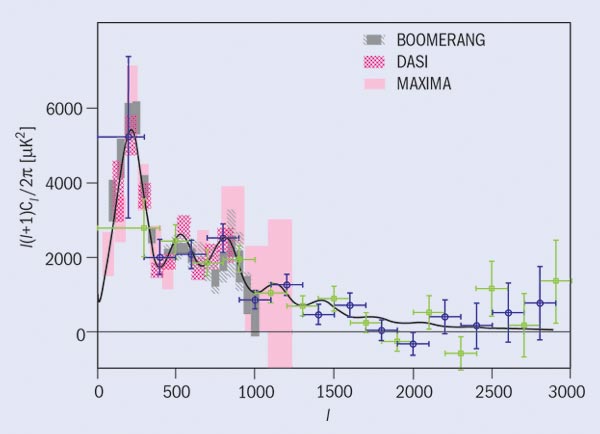
The first results from the Cosmic Background Imager (CBI) were released in May. Observations of the microwave background are the closest astronomers can get to the Big Bang, and fluctuations in this radiation are evidence for the first clumping of matter particles. Measurements of the angular power spectrum give values for several fundamental cosmological parameters. The first signs are reassuring: CBI results agree with other recent observations suggesting a spatially flat universe.
CBI consists of 13 radio antennas operating at frequencies from 26 to 36 GHz. Located in the Atacama desert, CBI takes advantage of the low humidity at an altitude of 5080 m. The variations in temperature measured by the CBI are as small as 10 millionths of a degree.
CBI shares many design elements with DASI, an interferometer at the South Pole probing larger angular scales. Other complementary observations have been carried out by the balloon detectors BOOMERANG and MAXIMA (CERN Courier September 2000).

The power spectrum of the microwave radiation shows fluctuations in temperature due to sound waves in the early universe. The angular spectrum shows the intensity of these oscillations at different wavelengths. Other experiments have already revealed the first two or three peaks in the spectrum. CBI is now starting to reveal the higher “overtones” and the drop in the spectrum on small angular scales. Within errors, the results confirm the picture of a spatially flat universe with W = 0.99 ± 0.12, where font face=”symbol”>W is the ratio of matter in the universe to the critical level needed to halt the universe’s expansion.
CBI can also be used to observe the Sunyaev-Zel’dovich scattering of background radiation photons by the hot electrons in clusters of galaxies. Measurements of this effect can be used to study the properties of the hot cluster gas and the evolution of clusters, and to give a measure of the Hubble constant.





